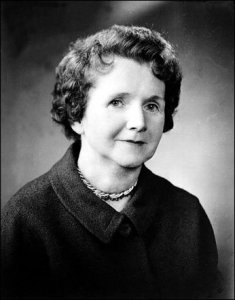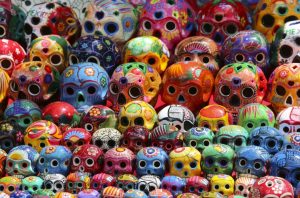From pyramids to hieroglyphics, it is no surprise that ancient Egypt is known for its strange, unique, and specific rituals that tie into their spirituality. Many of these rituals are precise and well thought out, in order to fit into their beliefs. One of the more important activities of the Egyptians was mummification. When the word is mentioned, frightening bodies wrapped in white strips of cloth is usually the first image that comes to mind. But why did the Egyptians take the time to prepare the deceased in this way, as well as make their tombs as glamorous as they did?

Many of us were taught about the Egyptians and their culture in primary school, but these lessons were fairly superficial in terms of the beliefs and reasoning behind their rituals. The ancient Egyptians had many views on death and the afterlife, all of which they took very seriously. According to them, humans all possess two souls or “doubles”; the “ka” and the “ba.”1 Both of these “doubles” were widely celebrated at an individual’s death. However the “ka” was the spirit that was more accommodated to in the tomb because it was understood that they needed to be nurtured in order for the deceased to be accepted into heaven, as well as for the prosperity of the people.2
The “ka” was said to be the spirit most associated with the identity of the deceased. A person would have no interaction with his or her “ka” until that individual had passed. Therefore, generally everything that was done to and for the body was also done for the “ka.”3 One of the reasons the preservation of the body (mummification) was performed was so the spirit would not be alone in the tombs.4 It was believed that the “ka” could bring the body back to life. People of the community would fill the tomb with items that they believed would please the spirit.5 Usually, these items included food, wine, and incense. The physical body was cleansed, dried, and wrapped to preserve the body and prevent the “ka” from a lack of nourishment.
Although it is interesting to learn the process of mummification and how it preserves the body, it is equally as satisfying to learn about the reasoning behind it. The Egyptians had many gods and spirits that contributed to their way of life, and the “ka” is no exception. It serves a basis for a good part of the mummification process, and gives more of an understanding as to why this process is necessary. 6
- E. A. Wallis Budge, Egyptian Religion (Routledge Revivals) : Egyptian Ideas of The Future Life (London: Routledge, 2013), 34. ↵
- John H. Taylor, Death and the Afterlife in Ancient Egypt (Chicago: University of Chicago Press, 2001), 19. ↵
- Budge, Egyptian Religion, 49. ↵
- Diana Craig Patch, Reflections of Greatness : Ancient Egypt at the Carnegie Museum of Natural History (Pittsburgh, Pa.: The Museum, 1990), 79. ↵
- Patch, Reflections of Greatness : Ancient Egypt at the Carnegie Museum of Natural History, 80. ↵
- Taylor, Death and the Afterlife in Ancient Egypt, 16-17. ↵



53 comments
Belia Camarena
It has always interested me how Egyptians constructed such elaborate tombs, but i never considered that this would be done for more than just the aesthetic. However, there is much more to this tradition, since the preparation of the tomb and the body is done to satisfy the ka. It is fascinating that the Egyptians believed a person had two souls. I have never heard of another religion that teaches this.
Matthew Rios
It’s always been to my understanding that even some of the earliest hominids believed in some sort of after life. They would bury or decorate graves in such a way that really could only lead to such a conclusion, much like mummifications. Although the gods, goddesses, and tales of the ancient world actually had depth to them in such a way that explained their actual beliefs.
Mario Sosa
I had always thought that mummification was simply for the Egyptians to prepare their bodies for the afterlife, but now I see that the process is more detailed. The idea of all humans having two souls was something I had never heard about, so that struck me to be interesting. I really liked reading about the ka soul, but I was left curious about the ba soul. Is the ba soul different from ka or are they identical? Either way, great job on the article!
Zeresh Haman
I have always loved learning and reading about mummification, and the process, but I have never encountered in article that gave insight to the Egyptians connection to the after life, and what it actually meant. I did not know that they believed that human have “double” souls, that is a really interesting fact. I also was unaware of the fact that they put food, and win inside the sarcophagus with the body. The ‘ka’ was also something new for me to read about. I really enjoyed this article.
Steven Clinton
Great article! The Egyptian had an interesting relationship with the afterlife and death. Mummification was an elaborate way to prepare the dead for their burial and the afterlife. Mummification has an influence in a modern day; at morgues now, they now clean up the corpse and prepare it for the funeral. It is amazing how ancient cultures from long ago have long lasting influence on the world as we know it.
Jennifer Pogue
Your last sentence is very true. It is satisfying to know the reason behind why things happened. That said, your article is very interesting. I knew a little about the mummification process, but I did not know how complex it truly was. I was most interested in learning about the two souls. Through out human live there has always been different thoughts about how the after life will be. I enjoyed how you informed us all about the Egyptian beliefs.
Aimee Trevino
Really interesting article! I had always heard a lot about mummies and the process of mummification, but the part about the “ba” and the “ka” is totally new to me. I find it really interesting that they believed in those two souls, and did a lot to keep the soul happy; like going out of their way to accommodate their tombs. Overall, really informative.
Alyssa Valdez
Wow I had no idea how much of a process it was when it came to mummification. I didn’t really know much about mummification, so had no idea that they believed in to souls “Ka” and “Ba.” I would have loved to learn even more about these two souls! This article was very informative and I enjoyed reading it! Keep up the good work!
Natalia Zuniga
Reading about how in depth the meaning and process of mummification process is was interesting. Mostly because of how we only ever learn of the basic mummification process and how deep it actually intertwined with their beliefs. I was most interested to know about the two souls. I would have been great to learn about how different they really were to understand them better.
Tina Valdez
I cannot say that I knew very much about mummies previous to reading your article, however your article provided a great deal of information that will stay with me. The belief that humans possess two souls is what I found most interesting. It seems that in some ways this belief is similar to the typical idea of one soul, however the Egyptians seem to have a more detailed idea of the soul. Great article!